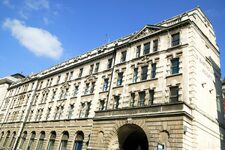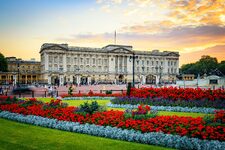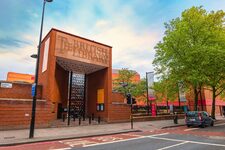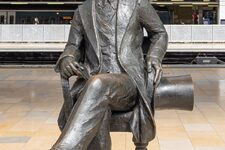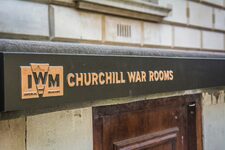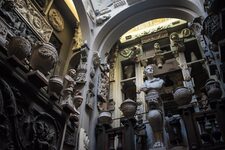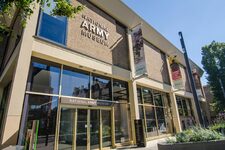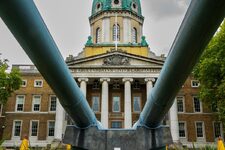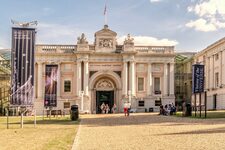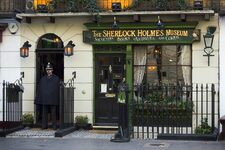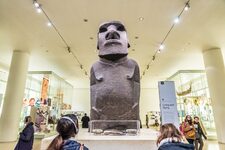London Holocaust Museum: Memories and Testimonies
London, a city steeped in history and culture, is home to a multitude of museums that narrate the tales of human resilience and perseverance. One such institution that stands as a poignant reminder of a dark chapter in our shared history is the London Holocaust Museum. Join me on a journey through time as we explore the profound history, the impact of the Second World War, and the compelling testimonies that echo within the museum's walls.
History
As we step into the London Holocaust Museum, it's crucial to grasp the historical context that led to its establishment. The Holocaust, orchestrated by the Nazis during World War II, resulted in the systematic genocide of six million Jews. The museum stands not only as a memorial but also as a testament to the collective vow of "never again." The exhibits are meticulously curated to tell the story of this tragic period, with artifacts, photographs, and documents providing a vivid portrayal of the horrors that unfolded.
Second World War
To truly understand the significance of the London Holocaust Museum, we must delve into the broader context of the Second World War. London, like many other cities, bore witness to the devastating impact of the conflict. Bombings, rationing, and the evacuation of children from urban areas became the harsh realities of daily life. Against this backdrop, the atrocities committed by the Nazis cast a long and dark shadow, leaving an indelible mark on the course of history. The museum serves as a solemn reminder of the sacrifices made and the resilience displayed by those who lived through these tumultuous times.
Testimonies
The heart of the London Holocaust Museum lies in the deeply moving testimonies of survivors. Walking through the halls, you'll encounter firsthand accounts that paint a vivid picture of the human spirit's triumph over adversity. These personal narratives, filled with courage and resilience, provide visitors with a profound connection to the past. The museum has ingeniously incorporated multimedia elements, including video interviews and audio recordings, allowing visitors to hear the voices of those who endured the unimaginable. Each testimony serves as a living tribute to the strength of the human spirit and a stark reminder of the importance of remembrance.
Walking Through History
Navigating the museum is like embarking on a journey through time. The exhibits are arranged chronologically, guiding visitors through the events that unfolded before, during, and after the Holocaust. From the rise of the Nazi regime to the liberation of the concentration camps, every section is designed to immerse visitors in the historical narrative. Artifacts such as personal belongings, letters, and photographs evoke a visceral response, bridging the gap between the past and the present. It's an emotional and educational experience that leaves an indelible mark on all who visit.
Interactive Learning
The London Holocaust Museum has embraced technology to enhance the visitor experience. Interactive displays and virtual reality installations provide a more immersive understanding of the events that transpired. This innovative approach not only engages younger generations but also ensures that the lessons of the Holocaust are passed down through the ages. The museum's commitment to education is evident in its outreach programs and partnerships with schools, fostering a deeper understanding of history and promoting tolerance in the face of prejudice.
The Role of Memory
In a world that sometimes seems to move at an ever-accelerating pace, the London Holocaust Museum serves as a sanctuary of memory. It compels us to pause and reflect on the consequences of hatred and intolerance. By preserving the memories of those who suffered, the museum challenges us to confront the darker aspects of humanity while inspiring a commitment to justice and compassion. Memory, in this context, becomes a powerful tool for shaping a more inclusive and empathetic future.
Conclusion
The London Holocaust Museum stands as a somber yet essential testament to the resilience of the human spirit in the face of unimaginable atrocities. It is a place where history comes alive, and where the echoes of the past resonate with the present. As we walk through its halls, we are not just witnesses to history but active participants in the ongoing dialogue against hatred and prejudice. The memories and testimonies enshrined within these walls serve as a powerful reminder that, in the words of philosopher George Santayana, "Those who cannot remember the past are condemned to repeat it."
Our Visitors Also Viewed
